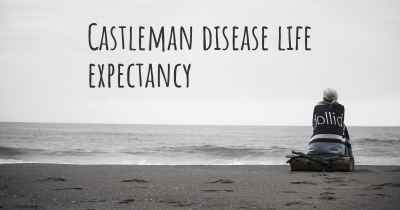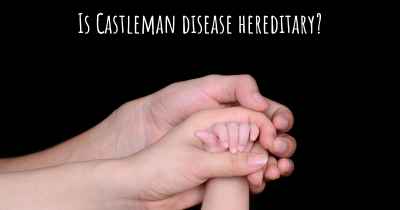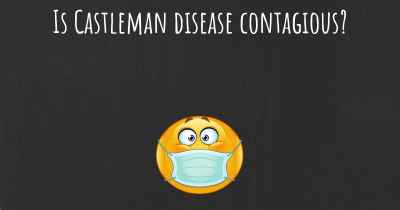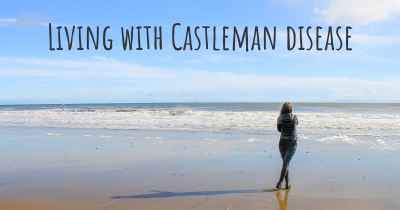What is the history of Castleman disease?
When was Castleman disease discovered? What is the story of this discovery? Was it coincidence or not?
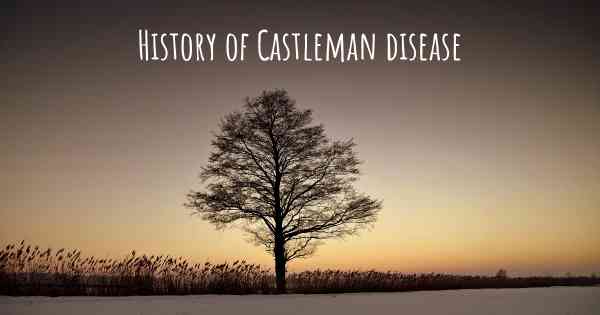
Castleman disease, also known as Castleman syndrome or angiofollicular lymph node hyperplasia, is a rare and complex disorder of the lymphatic system. It was first described by Dr. Benjamin Castleman in 1954, who identified a series of patients with enlarged lymph nodes that exhibited unique histopathological features.
The history of Castleman disease begins with Dr. Castleman's initial observations. He noticed that the affected lymph nodes had an abnormal architecture, characterized by an overgrowth of lymphoid cells and blood vessels. This led him to coin the term "giant lymph node hyperplasia" to describe the condition.
Over the years, further research and clinical observations have revealed that Castleman disease is not a single entity, but rather a spectrum of disorders with distinct subtypes. The disease can be classified into three main subtypes: unicentric Castleman disease (UCD), multicentric Castleman disease (MCD), and idiopathic multicentric Castleman disease (iMCD).
Unicentric Castleman disease (UCD) is the most common subtype and typically affects a single lymph node or a group of adjacent lymph nodes. It is often asymptomatic and may be discovered incidentally during routine medical examinations. UCD is usually localized and curable through surgical removal of the affected lymph node(s).
Multicentric Castleman disease (MCD) is a more aggressive form of the disease that involves multiple lymph nodes and can affect various organs throughout the body. MCD is characterized by systemic symptoms such as fever, night sweats, fatigue, weight loss, and enlarged liver and spleen. It can be further divided into two subtypes: human herpesvirus-8 (HHV-8)-associated MCD and HHV-8-negative/idiopathic MCD.
Human herpesvirus-8 (HHV-8)-associated MCD is linked to infection with HHV-8, a virus associated with Kaposi sarcoma. This subtype is more common in individuals with weakened immune systems, such as those with HIV/AIDS. Treatment for HHV-8-associated MCD often involves antiviral therapy and immune modulation.
HHV-8-negative/idiopathic MCD is the subtype that occurs in individuals without HHV-8 infection. The exact cause of this subtype remains unknown, and it poses significant challenges in terms of diagnosis and treatment. The management of HHV-8-negative/idiopathic MCD often involves immunosuppressive medications, anti-inflammatory drugs, and targeted therapies.
Since the initial discovery of Castleman disease, significant progress has been made in understanding its pathogenesis and developing treatment strategies. Researchers have identified various cytokines and signaling pathways that play a role in the development and progression of the disease. This knowledge has paved the way for the development of targeted therapies, such as monoclonal antibodies that specifically block these pathways.
Additionally, advancements in diagnostic techniques, such as imaging studies and molecular testing, have improved the accuracy of diagnosing Castleman disease. This has led to earlier detection and intervention, ultimately improving patient outcomes.
Despite these advancements, Castleman disease remains a challenging condition to manage. The rarity of the disease and its diverse subtypes make it difficult to conduct large-scale clinical trials and establish standardized treatment guidelines. However, ongoing research efforts continue to shed light on the underlying mechanisms of Castleman disease and explore novel therapeutic approaches.
In conclusion, Castleman disease is a complex disorder of the lymphatic system that was first described by Dr. Benjamin Castleman in 1954. It encompasses a spectrum of subtypes, including unicentric Castleman disease (UCD) and multicentric Castleman disease (MCD). MCD can be further divided into HHV-8-associated MCD and HHV-8-negative/idiopathic MCD. Significant progress has been made in understanding the disease's pathogenesis and developing targeted therapies. However, challenges remain in terms of diagnosis and treatment due to the rarity and heterogeneity of Castleman disease.
